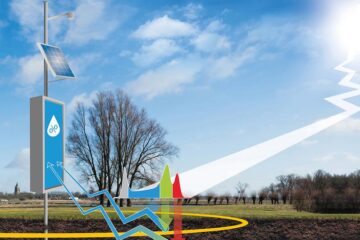A Full House for Architects!

MACE links up the major European architectural archives, making their holdings accessible to the architecture and design communities. In the installation at Biennale Architecture, visitors may put cards on an interactive table to retrieve and visualize networks of different kinds of connections between the design and construction projects represented by the cards and documented in these repositories.
MACE, the project behind this playful showcase, develops a highly user-friendly, web-based infrastructure for the retrieval of information on building and design projects from architectural archives – in Europe and beyond. To achieve this, the individual documents, plans, sketches etc. in the repositories are annotated with additional descriptions (metadata), most of them defined by human experts. These rich metadata let the MACE portal offer novel approaches to retrieving the material, which are well attuned to the way architects and designers think and work.
Through the federation of the repositories, their holdings, which had been available only to small groups of experts, now become accessible worldwide, in particular for teachers and students. Community tools in the MACE portal foster communication and discussion among its users, also helping to raise the quality of eLearning in Architecture.
Dr. Martin Wolpers of Fraunhofer FIT, the MACE project coordinator, explains that, „to optimize retrieval, we use a specific mix of metadata in MACE. In addition to ontologies and traditional metadata that describe an item's content, we use metadata that relate to learning processes and design processes, to user characteristics and social context.“
The MACE installation at Biennale Architecture, the leading international Architecture exhibition, uses a table with an interactive tabletop and a large-scale projection. Cards the size of playing cards represent individual architectural projects. Visitors can place a card on the tabletop and the MACE system will display related material from the repositories, e.g. multi-media presentations, project keywords or related projects. With several cards on the table, the MACE system visualizes the multidimensional network of relationships and similarities among the projects. The installation was created by a team from Fachhochschule Potsdam and Werk5, Berlin.
Among the prominent visitors of Biennale Architecture were Giorgio Napolitano, the Italian President, and Franco Bernabè, President of Telecom Italia. The exhibition runs to November 23, 2008.
In the conference program of Biennale Architecture, the MACE consortium organized a two-day conference on On-line Repositories in Architecture. More than 80 participants from 15 countries discussed strategies and methods to locate, classify, annotate and retrieve architectural contents on the Internet in order to make it accessible in the richest ways possible.
The MACE project on Metadata for Architectural Contents in Europe is funded in the European eContent+ program. Besides Fraunhofer FIT, the project coordinator, the consortium includes: Collaboratorio, Deutsches Forschungszentrum für Künstliche Intelligenz, European Association of Architectural Education, Fachhochschule Potsdam, Fraunhofer-Informationszentrum Raum und Bau IRB, Humance AG, Katholieke Universiteit Leuven, NAUTES S.r.l, Open Universiteit Nederlands, Università Politecnica delle Marche, Politecnico di Milano, Universitat Politècnica di Catalunya and Università IUAV di Venezia.
For more information visit http://www.mace-project.eu
Contact:
Alex Deeg
pr@fit.fraunhofer.de
Phone: +49 2241 14-2208
Media Contact
Alle Nachrichten aus der Kategorie: Veranstaltungsnachrichten
Neueste Beiträge

Das Mikrobiom verändert sich dynamisch und begünstigt wichtige Funktionen für den Wirt
Ein interdisziplinäres Forschungsteam des Kieler SFB 1182 untersucht am Beispiel von Fadenwürmern, welche Prozesse die Zusammensetzung des Mikrobioms in Wirtslebewesen steuern. Alle vielzelligen Lebewesen – von den einfachsten tierischen und…

Wasser im Boden – genaue Daten für Landwirtschaft und Klimaforschung
Die PTB präsentiert auf der Woche der Umwelt, wie sich die Bodenfeuchte mithilfe von Neutronenstrahlung messen lässt. Die Bodenfeuchte hat nicht nur Auswirkungen auf die Landwirtschaft, sondern ist als Teil…

Bioreaktor- und Kryotechnologien für bessere Wirkstofftests mit humanen Zellkulturen
Medizinische Wirkstoffforschung… Viele Neuentwicklungen von medizinischen Wirkstoffen scheitern, weil trotz erfolgreicher Labortests mit Zellkulturen starke Nebenwirkungen bei Probanden auftreten. Dies kann passieren, wenn zum Beispiel die verwendeten Zellen aus tierischem…





















